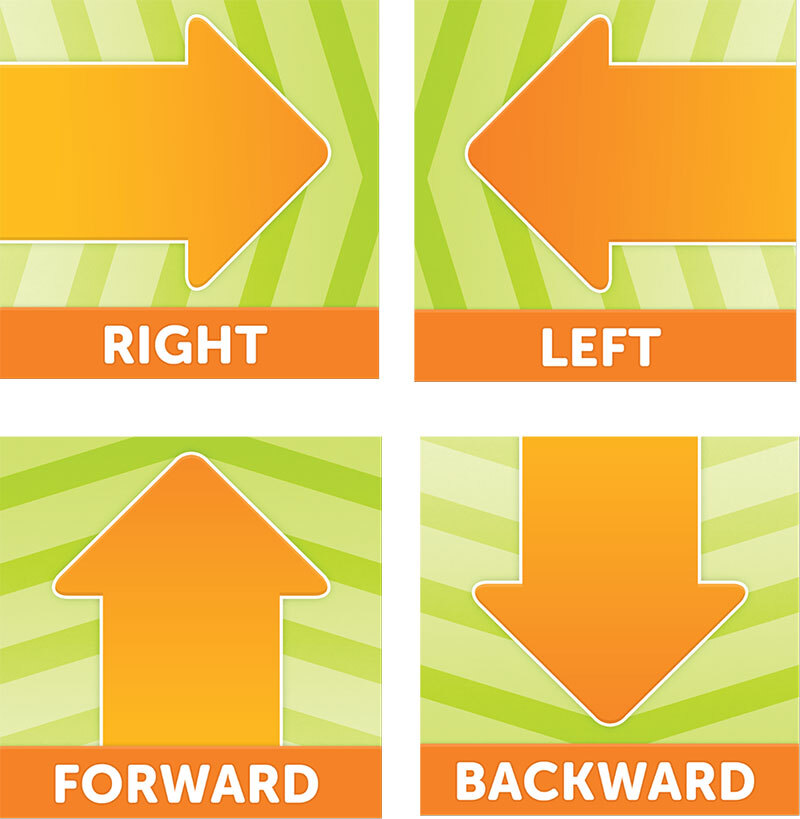
This activity involves playing a game similar to “Simon Says”. Children will follow a set of instructions (algorithms) involving loops using number cards and either arrow cards or move cards. Children will take a number of steps in a particular direction (e.g., 2 left steps) or complete a number of moves (e.g., 3 stomps). The loops make it easier for children to remember the instructions. Children will practice numeral recognition and counting while learning to follow a sequence of instructions with loops.
Explain and define algorithms.
Introduce Robot X, holding up the toy robot and explain:
Introduce the game and invite children to stand facing you (but spread out like they would when dancing):
Review the arrow cards. Invite children to model moving in each direction.
Repeat this a few times with each direction to practice and become familiar with the moves. [NOTE: remember to explain to children that movement should occur in a shuffling manner, like a robot, instead of turning the body in that particular direction. So for backwards, simply take a step back instead of turning around. For left, just take a step to the left.]
Explain that they should do what the card says to do after saying the words “Sim says… .”
Provide an example.
[NOTE: The benefit or efficiency of loops in the instructions become more apparent with larger numbers.]
Provide a second example.
Continue to give directions, saying “Sim says…” and presenting the number card and arrow card. You may gradually increase the difficulty of the directions.
Instead of playing with arrow cards, you can also play with action cards (clap, stomp, jump).
For example: Let’s try a round together. Sim says… and then raise the command cards (e.g., stomp card with number 3). Then model by stomping 3 times.
Explain: We saw the number 3 and the stomp card [point to the 3 and then the stomp visual on the card], so we stomped three times.



We want to hear from you!
Please take this 5-minute survey and help us serve you better.
